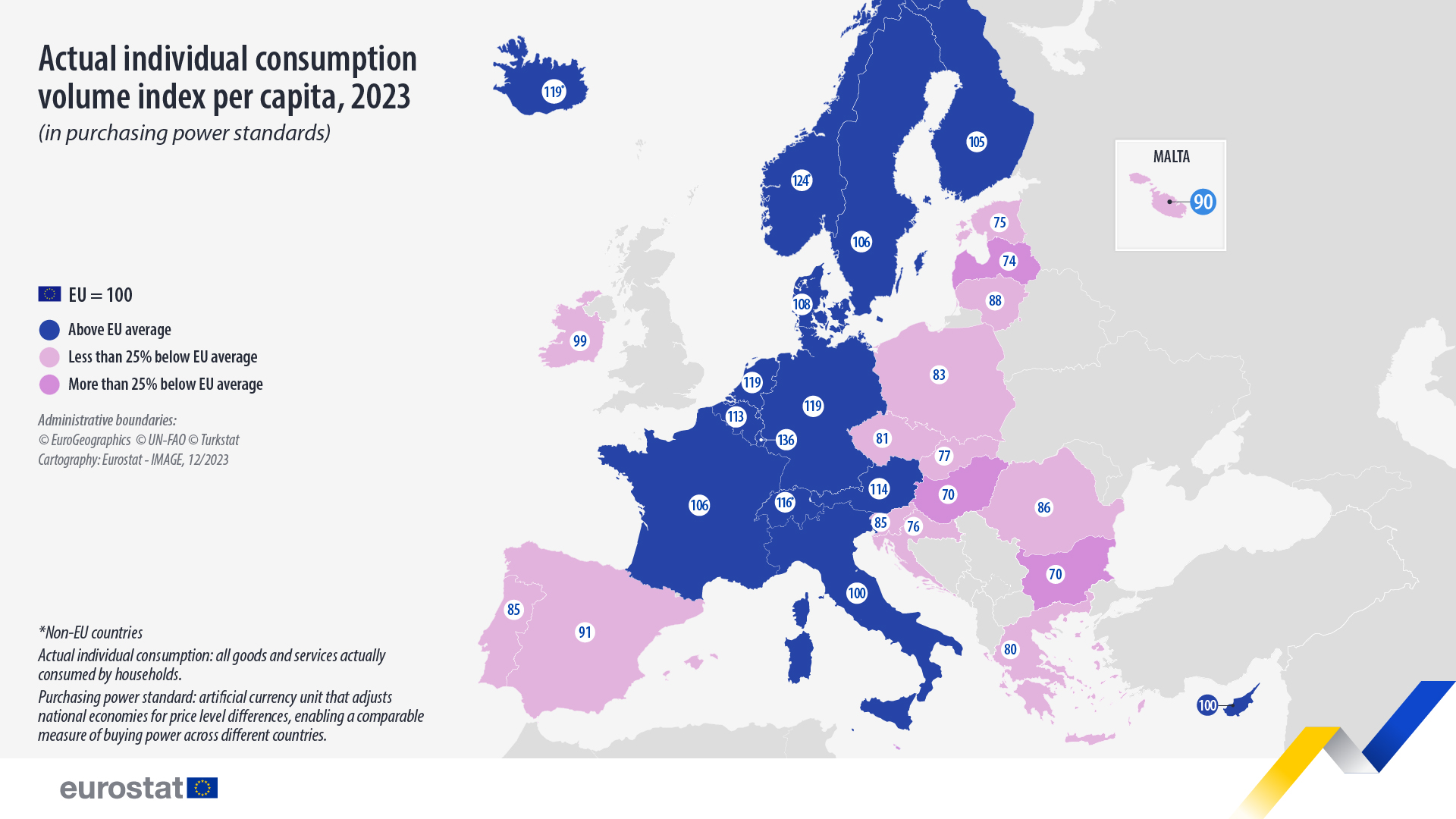Switzerland 111. 72; Ireland 107 .24; Singapore 93. 96; Norway 90. 35; US 89. 68; Denmark 71. 97; Netherlands 70.61. 61; Australia 67. 98; Austria 61. 08; Sweden 59. 51; Germany 57. 91. Canada 55. 89; UK 54. 28; New Zeland 48. 23; Italy 41. 71; Spain 37: 36; Russia 15. 08 and others.
In 2023 (published in mid-2024) the Irish Enterprise agency reported that €34.60 billion (Euros), in indigenous exports. There were no net data.
European Union at the start of 2024: "The highest relative share of foreign-born individuals within the total population was in Luxembourg (51.0% of the resident population), followed by Malta (30.8%), Cyprus (26.9%), Ireland (22.6%), Austria (22.1%), Sweden (20.6%) and Germany (20.2%). By contrast, foreign-born individuals represented less than 5% of the population in Poland (2.6% of its resident population on 1 January 2024), Romania (3.1%), Bulgaria (3.3%) and Slovakia (3.9%)."
The Irish population was at 5.4 million in April 2024.
Mainly American firms give the impression that Ireland's per capita GDP is the second highest in the world.
It is in line with Portugal's.
"Goods for processing; Other conceptual adjustments and Merchanting (net export)"
It was a fiction that Apple was shipping iPhones from Ireland to China.
Apple pays Irish taxes but Apple does not book the transactions in Ireland.
To produce Modified GNI (GNI*), the GNI (Gross National Income) is adjusted for factor income of Redomiciled Companies; depreciation on R&D; Service Imports and Trade in Intellectual Property (IP) depreciation on Aircraft Leasing.
Each year from 2012/2023, an 8bn were called 'imports.'
From 510bn, the GNI* amount fell to 291bn.
€115bn came from overseas; in 2023 the per capita was Є30,000.
The European Union says "Actual individual consumption, abbreviated as AIC, refers to all goods and services actually consumed by households. It encompasses consumer goods and services purchased directly by households, as well as services provided by non-profit institutions and the government for individual consumption (e.g., health and education services).
In international comparisons, the term is usually preferred over the narrower concept of household consumption, because the latter is influenced by the extent to which non-profit institutions and general government act as service providers.
Although GDP per capita is an important and widely used indicator of countries’ level of economic welfare, consumption per capita may be more useful for comparing the relative welfare of consumers across various countries. AIC per capita is usually highly correlated with GDP per capita, because AIC is, in practice, by far the biggest expenditure component of GDP."
Actual Individual Consumption (AIC) per capita increased in 15 EU countries relative to the EU average, with notable gains in Ireland (99% in 2023 vs 91% in 2021), Cyprus (100% vs 94%), and Malta (90% vs 85%).
Ireland has the lowest spending on defence as a proportion of its economic wealth out of 38 European states out of 38 European states
"The analysis shows: Ireland's defence budget in 2024 (€1.29 billion) equates to 0.24% of its GDP; Average of 38 European countries is 1.74%; Malta, also neutral, is second lowest, spending €90 million or 0.38%; Austria’s defence budget in 2024 (€5.1bn) represents 0.99% of GDP; Switzerland spent €6.24bn on defence in 2024 or 0.69% of GDP"

Micheál Martin is the Irish Taoiseach (Prime Minister)


